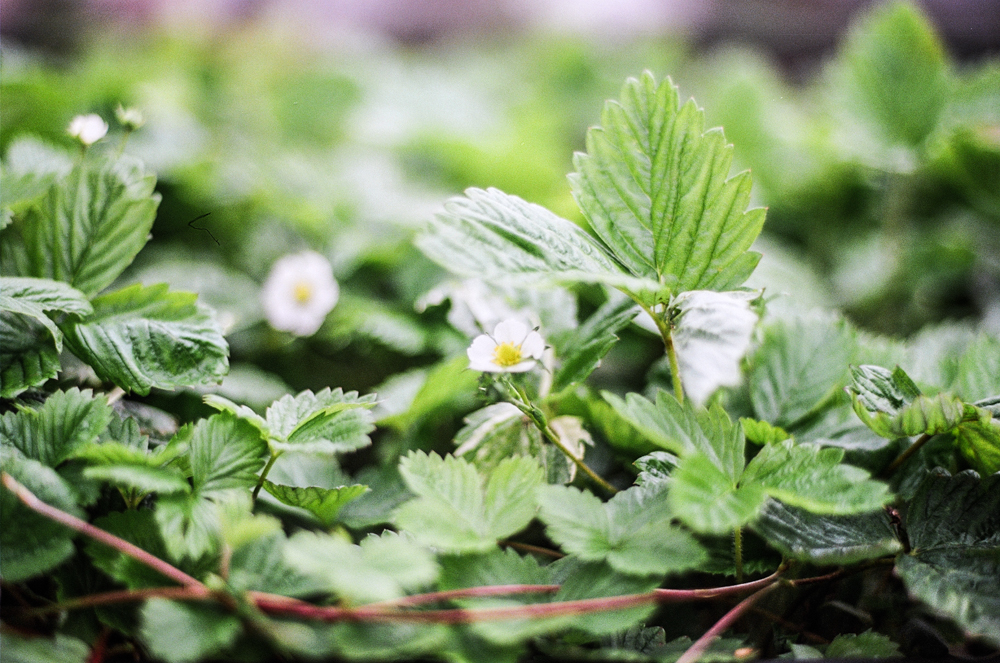
I made this jam a week ago today. Of course, I had planned on telling you about it straight away, but exciting projects, a redesign, and kick-ass grades in my Swedish classes (insert thumb-up emoji here) got in the way.
With Lisa’s comment in mind, I stirred the fruits into the hot syrup. She wanted a simple jar recipe. And here it is. No endless canning, since we’re only making three 250mL jars. No fruits soaking in sugar for 24 hours. No fancy teas or flowers added.
Simply sugar and water boiled down to a syrup. A generous handful of chopped fruits. A pinch of pectin (optional, although I do love the thicker texture it produces). And a drop of citric acid (or lemon juice).

Yes, of the many things I look for in a jam, a sharp fruit flavour is possibly my favourite. And yes, I’m not going to pretend otherwise, I do like my confiture [jam] on the sweet side; you know, the French way.
Many times, I see people wrongfully call jams what are, in fact, fruits and sugar – most likely anywhere between 10% and 20% by weight. These are a whole other subject, and something that should be classified as compotes, not jams, s’il-vous-plaît!
Terminology aside, this recipe here is perfect for anyone with a backyardful of rhubarb stems. Here in Sweden, rhubarb just started getting out of control, the same way it usually does in France, only a few months later.

You could make three jars, like I did here with some of the rhubarb that I picked from Svante’s beautiful garden in Kusmark, or multiply the recipe according to how much fruit you have around.
For the record, if making big batches, I tend to go for 4-5kg of fruits at a time as I’ve found that if using more, the jam, which will take longer to cook, won’t have such a vibrant colour and flavours due to some of the sugar caramelising.

Small-batch rhubarb jam
This recipe is adapted from my basic jam recipe, which was itself adapted from Andrew Gravett’s beautiful raspberry confiture. Merci Chef!
The sugar – which should be of the thicker granulated kind, as it contains less impurities, and thus creates less foam to skim – and fresh rhubarb juice get cooked to 120°C before the fruits are added.
This step which I see as fundamental has one major impact on the jam cooking time. Which makes it not only convenient, but also reduces the time during which the fruits are cooked, maintaining a fresh flavour.
A note on the citric acid: I like to use citric acid powder and not lemon juice, as I’ve found that it keep the fruits’ flavour more intact. No matter which one you go for, always add it at the end of the cooking process – off the heat.
A note on the pectin: I use a HM (which stands for High Methyl) pectin which has the property to set rather quickly and enables a clean flavour release.
Differences between the many types of pectin (which I could tell you about, let me know in the comments if you’re interested) can affect the finished product, however, I’ve found that this recipe could bear various pectins; from LM to HM to pure fruit pectin powder.
It will set slightly looser or firmer – nothing drastic – but if you’re about to make a 5kg batch, then I can only recommend to try with a smaller quantity of fruits to adjust the pectin levels as needed.
You could also go without pectin, and I did a very small pectin-less batch just a few days ago, to try; and although the texture is definitely less thick, I was pretty happy with the jam generously spread on toast for breakfast the next day.
Small-batch rhubarb jam
1/2 tsp (2.5 g) citric acid powder
1/2 tsp (2.5 g) water
550 g trimmed and washed rhubarb, chopped into 5mm slices
500 g granulated sugar
120 g freshly-made rhubarb juice (or water)
30 g caster sugar
1/2 tsp (3 g) pectin powder, optional (see note above)
Sterilise 3 x 0.25L glass jars and their lid.
In a small bowl, mix the citric acid and water, and set aside until needed.
Place the sugar and water in a pan larger than you think you’d need. Cook over medium heat to 120°C. Add the rhubarb slices and cook to 105°C, mixing every two or three minutes – I like to use a whisk for this. For this quantity it should take around 15-20 minutes; every now and then, skim off the foam that forms using a small ladle.
While the jam is cooking, combine – very very well – the caster sugar and pectin in a small bowl (make sure it is very dry).
Once the jam has reached 105°C, sprinkle the pectin mix (if using, otherwise, jump to the next set of instructions) off the heat, whisking as you do so. Return over medium heat and simmer for 3-5 minutes.
Off the heat, add the citric acid mixture and whisk well. Immediately transfer to sterilised glass jars, to around 1-2cm up to the rim. Screw the lids on and turn the jars upside down. Allow to cool down completely and store.
























